Discover the world of long grain rice, exploring different types such as basmati and jasmine, their benefits, and their vital role in bringing flavors to life in a variety of dishes, highlighting their versatility in kitchens worldwide.

Jump to:
- 🌾 Grain Highlights
- 🍚 What is Long Grain Rice?
- 📜 Types of Long Grain Rice
- 1. Long Grain White Rice
- 2. Long Grain Brown Rice
- 3. Basmati Rice
- 4. Jasmine Rice
- 5. Texmati Rice
- 6. Wehani Rice
- 7. Pecan Rice
- 8. Sticky Rice
- 9. Carolina Gold Rice
- 10. Della Rice (Popcorn Rice)
- 11. Red Rice
- 👩🏻🍳 Cooking with Long Grain Rice
- 🙋♀️ People Also Ask [FAQs]
🌾 Grain Highlights
- This article offers an in-depth look at long-grain rice, detailing the characteristics of various types, such as basmati and jasmine.
- Learn about the unique amylose content that defines each variety and how this influences their cooking properties and suitability for different culinary applications.
- Understand the health benefits associated with long-grain rice, including its contribution to dietary fiber, vitamins, and minerals, as well as its ability to provide a steady release of energy.
- Additionally, the post highlights the versatility of long-grain rice in the kitchen, recommending the best types of dishes to prepare with each rice variety to appreciate their distinct textures and flavors fully.
🍚 What is Long Grain Rice?
Long-grain rice, known for its lengthy, thin kernels that are typically three to five times longer than their width, distinguishes itself through its high amylose content. This type of starch prevents the grains from sticking together during cooking, ensuring they remain separate and fluffy. Popular varieties include basmati and jasmine, which, on average, contain about 22% amylose.
In contrast to short-grain rice, which is stickier due to higher amylopectin and lower amylose levels, long-grain rice has less amylopectin, contributing to its non-sticky, fluffy texture after cooking. This texture is particularly suited for dishes that benefit from distinct grains, such as pilafs and salads.
Moreover, long-grain rice, especially the brown types, is a good source of dietary fiber, supporting digestion. It also provides essential nutrients, including vitamin B, iron, and magnesium. The significant amylose content also means it digests slowly, offering a steady energy release and aiding in blood sugar regulation.
📜 Types of Long Grain Rice
Let's explore some of the most popular varieties of long-grain rice that you might find in your kitchen or on your next grocery run.
1. Long Grain White Rice
Long grain white rice is a versatile type of rice known for its high amylose content, about 22%, and its carbohydrate content of 28.17 grams per every 100 grams.
When cooked, it offers a light and fluffy texture, perfect for complementing a wide array of dishes. This variety tends to have a neutral flavor, making it an adaptable choice for both savory and sweet recipes.
Due to the removal of the husk, bran, and germ, long-grain white rice is lower in fiber than its whole-grain counterparts. However, it's often enriched with vitamins like folate to improve its nutritional profile. I find long-grain white rice to be the perfect choice for dishes such as stir-fries, fried rice, and rice pilafs.
- Grain Type: Long
- Starch Content: High amylose
2. Long Grain Brown Rice
Long-grain brown rice retains the bran and germ layer, offering a chewier texture and nuttier flavor once cooked.
It's higher in fiber and rich in nutrients such as magnesium, which can aid digestion and provide a slow release of energy. This makes it an excellent choice for those looking to add more whole grains to their diet.
Brown rice is ideal for heartier dishes where its robust texture and flavor can stand out, such as in grain bowls or as a side to grilled meats and vegetables.
- Grain Type: Long
- Starch Content: Medium amylose

3. Basmati Rice
Basmati rice is highly aromatic and has a unique, nutty flavor. Its fragrance comes from a high concentration of 2-acetyl-1-pyrroline, giving it a distinct profile among other rice types. This variety is available in both white and brown forms, offering options for different nutritional preferences.
It's long and slender, and it becomes even longer when cooked, with grains that stay separate and fluffy. Basmati has a medium to high amylose content, contributing to its non-sticky texture.
It pairs wonderfully with biryani, curries, dals, and pilafs, enhancing the overall flavor profile of these dishes. In addition to its culinary uses, basmati rice is also appreciated for its relatively lower glycemic index than other types of white rice.
Finding the perfect substitute for basmati rice can be challenging due to its unique characteristics. However, there are several options. For a detailed exploration of these alternatives, refer to my comprehensive guide on basmati rice substitutes.
- Grain Type: Long
- Starch Content: High amylose
4. Jasmine Rice
Jasmine rice, originating from Thailand, is known for its soft, slightly sticky texture and a sweet, floral aroma. Like basmati, jasmine rice can be found in white and brown versions, catering to different dietary needs and preferences.
Jasmine rice is a long-grain rice that, when cooked, offers a subtle sweetness that complements both savory and sweet dishes. Its lower amylose content than basmati accounts for its stickier texture.
This rice is a staple in Thai cuisine, ideal for pairing with dishes like Thai curries, fried rice, and coconut milk-based recipes. Its delicate flavor and fragrance can elevate a simple meal to something truly special - and here's how to cook jasmine rice on the stove.
- Grain Type: Long
- Starch Content: Medium amylopectin

5. Texmati Rice
Texmati rice is a cross between traditional basmati rice and long-grain American rice varieties, combining the best traits of both. It cooks up fluffy and separate, with the elongated grains characteristic of basmati, but it boasts a slightly nutty flavor that's distinctly American.
Similar to basmati, Texmati has a medium to high amylose content, contributing to its non-sticky texture, making it versatile for a wide range of dishes.
It is rich in carbohydrates, about 44g per cup for energy, it's ideal for dishes that benefit from a fragrant, flavorful base like Tex-Mex casseroles or as an accompaniment to hearty stews.
- Grain Type: Long
- Starch Content: Medium amylose
6. Wehani Rice
Wehani rice is a flavorful brown rice developed by Lundberg Family Farms in California using basmati seeds. It's a product of late 20th-century traditional cross-breeding, earning its place among heirloom rice varieties.
This rice is known for its captivating popcorn-like aroma as it cooks, filling your kitchen with a warm, inviting scent.
The grains have a reddish-brown color and pair well with hearty dishes such as roasted meats, stews, and vegetable bowls. They are also great in cold rice salad or for creating flavorful dirty rice.
- Grain Type: Long
- Starch Content: High in amylose
7. Pecan Rice
Pecan rice, also known as Louisiana Pecan Rice, offers a unique flavor profile that hints at its namesake nut. This long-grain rice turns fluffy and fragrant when cooked, with a slightly nutty taste that complements both savory and sweet dishes.
It's an excellent source of carbohydrates and provides a moderate amount of fiber, especially in its whole grain form. Pecan rice pairs beautifully with Southern dishes, adding a gourmet twist to classics like gumbo or jambalaya. It can also serve as a base for rice pudding, where its subtle sweetness shines.
- Grain Type: Long
- Starch Content: Medium amylose
8. Sticky Rice
Sticky rice, known as glutinous rice despite containing no gluten, is a short-grain variety that becomes sticky and clumpy when cooked. This texture is due to its high amylopectin and low amylose content.
Sticky rice is a staple in many Asian cuisines, particularly in Thai and Lao dishes. It's often used in sweet dishes like mango sticky rice or in savory applications such as sushi or wrapped in banana leaves with fillings.
- Grain Type: Sticky rice is available in both long-grain and short-grain varieties.
- Starch Content: High amylopectin

9. Carolina Gold Rice
Carolina gold rice is a prized heirloom variety. It was once the cornerstone of the antebellum Southern economy. It's distinguished by its rich, golden hue and full-bodied grain.
When you cook Carolina Gold rice, it becomes fluffy with individual grains that don't stick together. It has a bit of a chewy feel to it and a rich, nutty taste. Its moderate amylose content ensures the grains remain distinct, making it an excellent choice for traditional Southern dishes.
This rice is not only a source of carbohydrates but also brings a piece of American history to your table. Ideal for pilafs, soups, or as a standalone side, Carolina gold rice complements robust flavors like those found in jambalaya or gumbo, offering a taste of the South's culinary heritage.
- Grain Type: Long
- Starch Content: Medium amylose
10. Della Rice (Popcorn Rice)
Della rice, often referred to as popcorn rice, is a long-grain variety known for its aromatic qualities that resemble the scent of popcorn when cooked.
This rice's texture is similar to that of basmati or jasmine rice, offering long, slender grains that become fluffy and light. It is versatile, pairing well with a wide range of dishes, from savory entrees to sweet desserts.
It's particularly well-suited for recipes that call for fragrant rice to enhance the overall sensory experience, such as stir-fries or rice puddings. The amylose content contributes to its non-sticky nature, making it a favorite for those who appreciate a delicate yet flavorful rice dish.
- Grain Type: Long
- Starch Content: High amylose
11. Red Rice
Red rice is a type of whole grain rice known for its reddish color, which comes from an antioxidant called anthocyanin.
This unpolished rice has a nutty flavor and is rich in fiber and nutrients. It's not typically a long-grain variety, but one exception is the Thai red cargo rice. Other popular varieties include Bhutanese red rice, samba rice, matta rice, and camargue red rice.
In the kitchen, red rice is quite versatile. It can be used in a range of dishes like salads, stir-fries, and risottos, adding a pop of color and a hearty, nutty flavor.
One notable feature of red rice is its high amylose content. As for health benefits, red rice is higher in protein and fiber than white rice varieties and can contribute to a balanced diet.
- Grain Type: Long
- Starch Content: High amylose
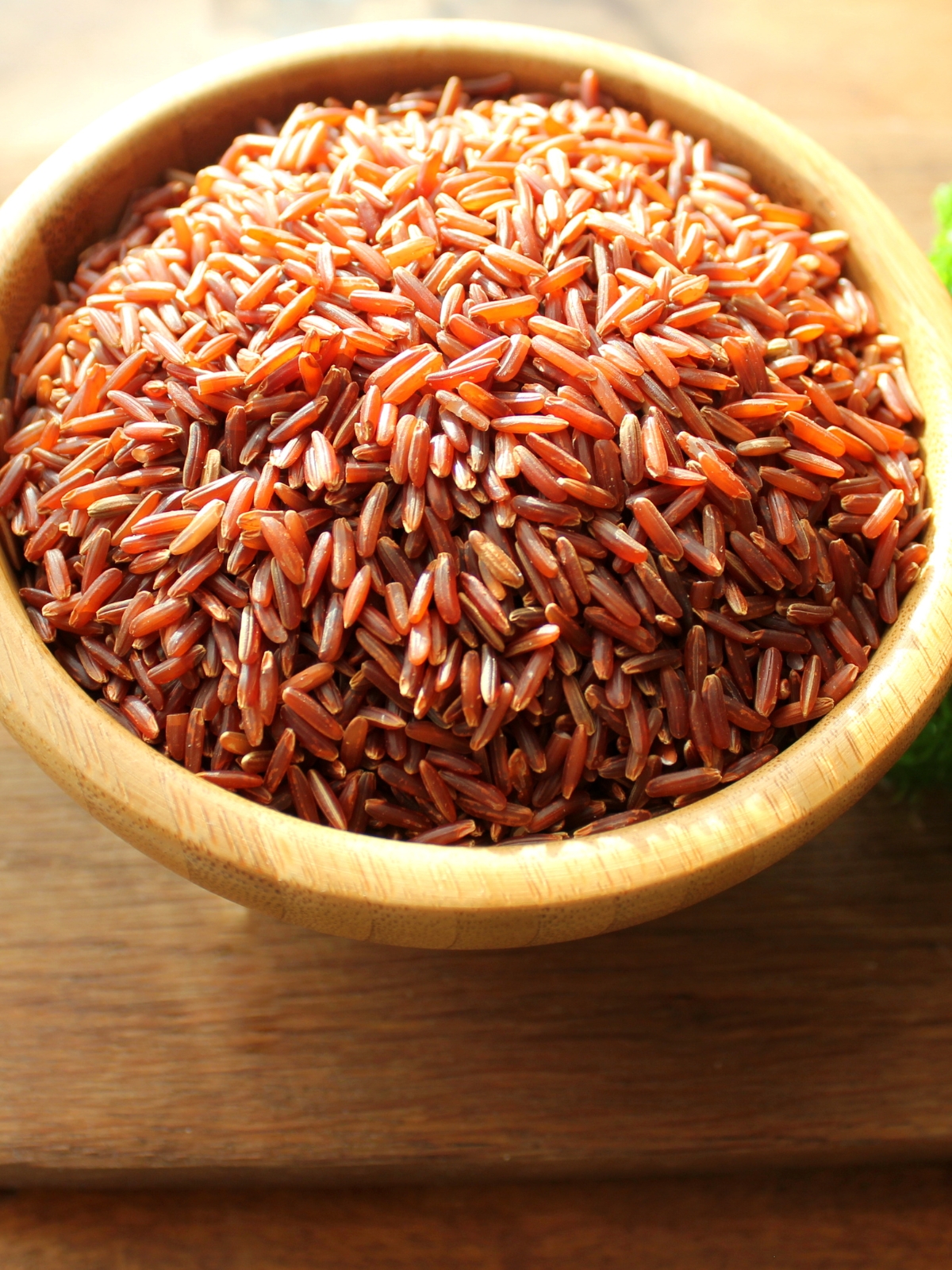
👩🏻🍳 Cooking with Long Grain Rice
Consider the dish's overall flavor profile when preparing meals with long-grain rice. This rice pairs exceptionally well with various spices, herbs, and ingredients, enhancing the taste without overshadowing other components.
While a detailed guide on cooking long-grain rice will come later, its non-sticky nature after cooking is what sets it apart. So, stay tuned for those cooking tips and step-by-step instructions in a future post, which will give you perfectly cooked rice each time.
🙋♀️ People Also Ask [FAQs]
Long-grain rice is a staple in many cuisines and dishes due to its light, fluffy rice texture when cooked. It's often used in Indian cooking for dishes like biryani and pilaf, while Jasmine rice is a staple in Thai dishes like green curry and fried rice. In cajun and creole cooking, you'll find it in jambalaya. Its neutral flavor and light texture also make it ideal for a variety of salads, side dishes, and even some dessert preparations.
To keep long-grain rice fresh and prevent it from going stale, store it in an airtight container in a cool, dry place away from sunlight. This will help protect the rice from moisture and pests. For opened packages, ensure the container is sealed tightly after each use to maintain freshness.
When buying long-grain rice, focus on quality by choosing rice that is free from dust and impurities. Ensure the packaging is intact and has no signs of damage or infestation. The place of origin can affect the taste and texture of the rice, as varieties like Indian basmati and Thai jasmine offer unique flavors. Finally, weigh price against quality, aiming for rice that meets your taste and budget.
Long-grain rice can be substituted with other types of rice in most recipes, but it may change the texture and flavor of the dish. For example, short-grain rice tends to be stickier and softer when cooked, which could change the consistency of the dish. Similarly, brown rice has a nuttier flavor compared to white long-grain rice. Always consider the final texture and flavor you want in your dish before making a substitution.

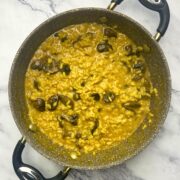

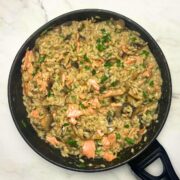
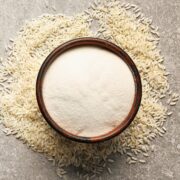
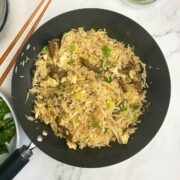

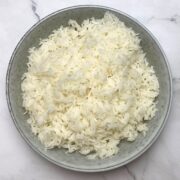



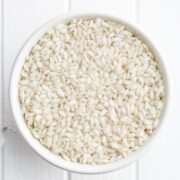



Leave a Comment